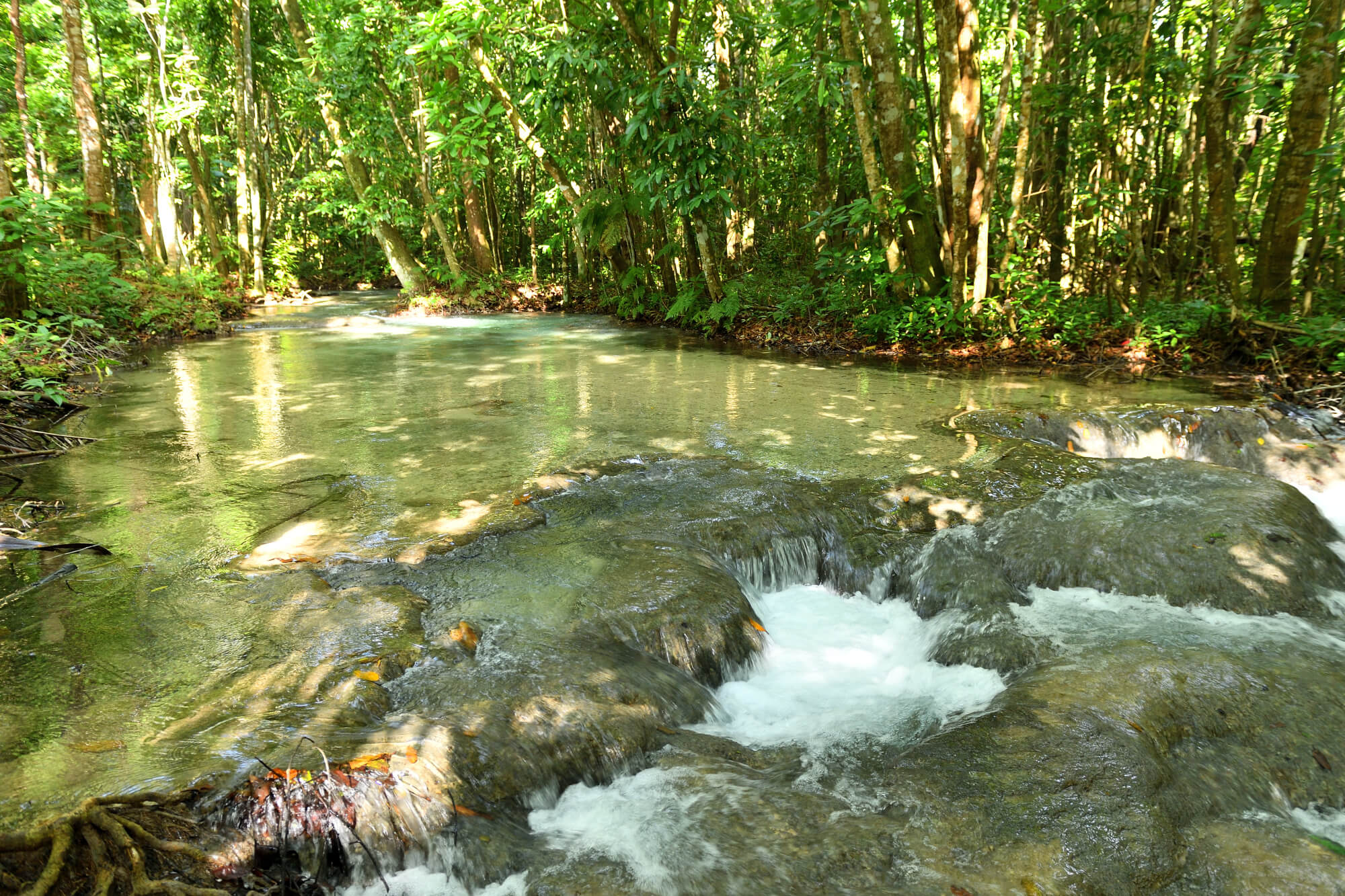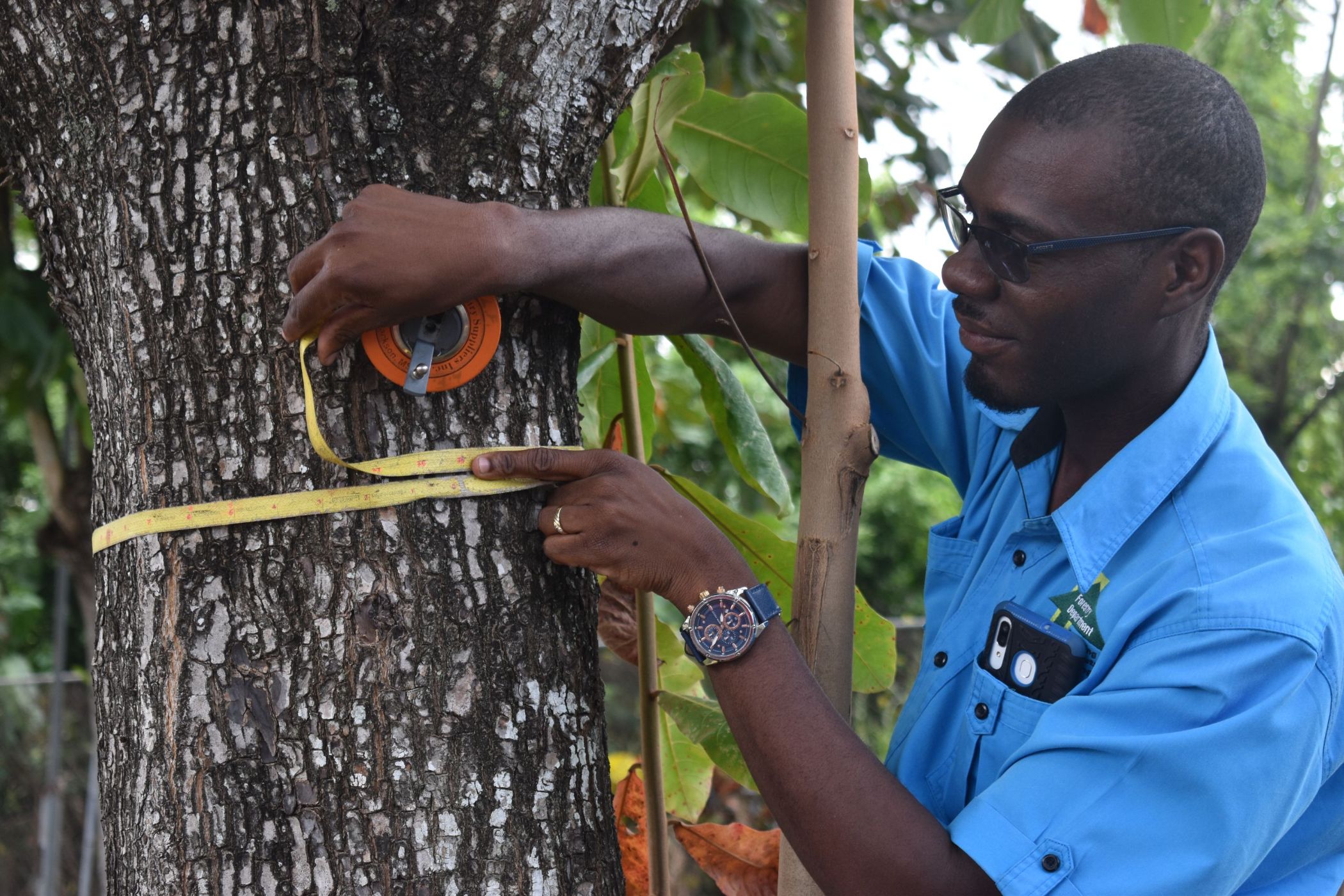
- Home
- What We Do
What We Do

Our Programmes
Support the Adopt-A-Trail Programme
“Become a Friend of the Bogue 2 Forest Reserve: Enhance, Preserve, and Build for Future Generations”
This initiative seeks to facilitate greater access to hiking, cycling, walking and nature relaxation for Jamaicans and visitors alike.
At a national level, the Adopt-A-Trail Programme supports Jamaica’s Vision 2030 Goal 4: ‘Jamaica has a healthy natural environment’. Internationally, the programme supports Sustainable Development Goals (SDGs) commitments to promote health and well-being and the sustainable management and use of forests. It will also support Jamaica’s Master Plan for Sustainable Tourism Development, which promotes environmental sustainability and the growth of adventure, health, heritage, and nature and eco-tourism-based products.



The programme will facilitate the establishment of a Forest Trail Network/ System. Trails will be developed using appropriate design and development standards based on applicable international and national best practices, desired uses and determined trail and infrastructure categories.
There are several categories under which you can become a sponsor, these include:
Trail Establishment
Trail establishment would be classified as the creation or renovation of a trail.
Tree Planting
Tree planting refers to the identification and planting of trees to beautify the space.
Trail Maintenance
Trail Maintenance includes the cleanup of trails to ensure it can be used at any time. This also includes varnishing as well as upkeep of the infrastructure that has been established.
Infrastructure Development
Infrastructure development these include bathroom facilities, parking area, gazebos, park benches, shelters, stairs etc.
Informational Signage
Informational signage these include story boards and tree Labels.
To become a sponsor, send an email to fdinfo@forestry.gov.jm or call (876) 618-3205 extensions 2016 or 2036.
What is a Local Forest Management Committee?
The Local Forest Management Committee (LFMC) is the institutional body created in watersheds management units to enable the participation of the communities in the co-management of forested areas (specifically those managed by the Forestry Department.
The formation of Local Forest Management Committees (LFMCs) is provided for by the Forest Act, 1996 and is an integral component of the "Community Participation" strategy of the Agency.

The Forestry Department hosting a community meeting in a forest-depepndent community in order to raise awareness
Participation in LFMCs
Membership on the LFMCs is open to all community groups, organisations, NGOs, private sector entities and Government agencies present in the particular forest area and whose members are willing to participate. Each stakeholder entity will be asked to select a representative and an alternate to serve on the Committee. Membership in the LFMC will be ratified by the Minister with responsibility for Environment on the recommendation of the Conservator of Forests. There is no limit to the number of entities that can be represented on the Committee.
Functions of LFMCs
The purpose of LFMCs is to:
Monitor the condition
of natural resources in the Committee's area
Hold discussions, public meetings and the like
about the state of the natural resources
Advise the Conservator
on matters relating to the development of the Forest Management Plan (FMP) and the making of regulations
Propose incentives
for conservation practices in the Committee's area
Assist in the design and execution
of conservation projects in the area
Any other functions
as may be provided for by or under the Forest Act
The Committee itself may identify functions which they need to undertake.
The operations of the LFMC will benefit overall watershed protection and management. The role of the Committee may be expanded in the future to take in watershed responsibility as a result of changes in the structure of national watershed administration and management.
Sustainable Alternative Livelihoods
To make local forest management more attractive to communities, the strategy has been to develop new initiatives and technical approaches of both the Forestry Department and NGOs which provides income earning opportunities for local communities. Some of the activities falling within this category are:
Ecotourism and Nature Tourism
Recreational Park Conservation
Agroforestry
Craft Production
Furniture Production
Plant Nurseries, including Exotic Species
Medicinal Plant Production
Bamboo for Low-Cost Housing and Crafts
Bee-keeping
Portable Sawmilling Operations
Fuelwood and Charcoal Production
Yam Stick Production
Where suitable sites on forest reserve lands have been identified in Local Forest Management Plans, individuals and groups will be approached to lease parcels for use in accordance with the conditions prescribed in the Forest Act and in any subsequent Forest Regulations. In certain situations, and where feasible, co-management arrangements or memoranda of understanding will replace standard lease agreements.
How to Establish an LFMC
Any community interested in forming an LFMC needs to write to CEO& Conservator of Forests indicating your interests. From there the Agency will contact you and begin the process.
To date, 18 LFMCs have been established across the island. They are:
- Buff Bay/ Pencar LFMC
- Spring Bank LFMC
- Northern Rio Minho LFMC
- Cockpit Country (3 LFMCs):
- North Cockpit Country
- South Cockpit Country
- South East Cockpit Country
- Dolphin Head LFMC
- Constitution Hill LFMC
- Dallas Castle LFMC
- Smithfield LFMC
- Westphalia LFMC
- Sawyer LFMC
- Spring Dunrobin LFMC
- Hillside LFMC
- Hessen Castle LFMC
- Stephney LFMC
- Grants Mountain LFMC
What is Land Declaration?
The Forest Act of 1996 allows private landowners to apply for their forested lands to be declared as either a forest reserve or a forest management area.
Benefits of the Programme
Your property will contribute to the preservation of Jamaica's environment
Remission of your property taxes
Prosecution of offenders under the Forest Act
Steps to Take
Make a written application to the CEO and Conservator of Forests stating your interest in declaring your area under the Forest Act. Be sure to provide us with:
The exact location of your land (parish, district, volume and folio number of the title etc.)
The size of land proposed for declaration and the percentage of the property this represents, e.g. 50%
The time period over which the declaration status would apply e.g. 10 years, 20 years, forever
Proof of ownership of the land e.g. the title a recent survey of the land (not more than 7 years old)
What Happens Next?
The Forestry Department schedules a site visit and based on this visit prepares a technical report for the CEO & Conservator.
The application for the declaration order is submitted and the CEO & Conservator makes a recommendation to the Minister who decides to accept or reject the application.
If accepted, the Minister will do either of the following:
Declare the land a Forest Management Area
Once the order has been signed and the legal obligations fulfilled, the information will be published in the Gazette.
OR
Subject to affirmative resolution, declare the private land a Forest Reserve after:
A notice of the intent to declare the land is published in the Gazette or such other medium as the Minister sees fit at least 90 days before making the order.
At least 90 days notice of the proposed declaration given by the Minister, e.g. by Gazette or newspaper.
Private Forestry
The potential of private landowners to contribute to national reforestation is recognised in the Forest Act, 1996 which mandates the Forestry Department to "promote the development of forests on private lands". The relevance of this mandate is supported by a land use assessment carried out by the Agency which showed that of the 69,000 hectares identified with reforestation potential, some 67,000 hectares are privately owned. This clearly underscores the need to involve private land-owners in reforestation.
In 1998 the Forestry Department formalized the private planting programme, which brought together its tree seedling distribution activities, particularly as they pertained to farmers and other landowners, into a structured programme.

Private Planting technical transfer training in progress
Programme's Success
The growth of the PFP has been gaining momentum since its rejuvenation in 1998. Existing private planters and new recruits to the programme have displayed great interest and enthusiasm in maintaining existing plantations and establishing new ones. Up to the end of 2004, over 650 persons have been registered in the programme, with over 370,000 tree seedlings distributed, representing the equivalent of 570 hectares of plantation establishment.
Programme Goal
The aim of the Private Forestry Programme is to encourage private landowners and other entities to plant trees on parcels of land not currently under productive use for commercial wood production and for soil conservation.
Who is it for?
The range of individuals/entities who are eligible to participate in the Private Planting Programme include:
Smallholder Farmers
Large Estate Farms
Absentee Land-owners
whose lands are not presently in productive use
Bauxite Companies
with land for restoration public land holding entities
Farmers with small to medium-size holdings have been the main beneficiaries of the programme to date, however, an ever increasing number of large estate owners are planting portions of their lands with timber trees for commercial production. The Forestry Department also actively recruits landowners whose lands may not be under productive use at present and whose main income is not derived from their lands.
What is offered?
Free timber tree seedlings and technical advice are provided by the Forestry Department to participants in the Private Forestry Programme (PFP). The type of technical advice given includes topics such as:
Species Selection
Site Preparation
Tree/Plantation Maintenance
Thinning and Pruning
Growth and Yield Determination
Participants are responsible for all costs relating to tree establishment and maintenance as well as transportation of tree seedlings to their planting site from the Forestry Department nursery.
The timber tree species available include:
Honduras Mahogany
(Swietenia macrophylla)
Jamaica Mahogany
(Swietenia mahagoni)
Caribbean Pine
(Pinus caribaea)
Blue Mahoe
(Hibiscus elatus)
Spanish Elm
(Cordia geracanthus)
Bitter Damsel
(Simarouba glauca)
West Indian Cedar
(Cedrela odorata)
Santa Maria
(Calophyllum calaba)
Teak
(Tectona grandis)
How does it work?
To apply to the Private Planting Programme, simply download (click here) and complete the form and forward it to any of our offices. You may also collect forms from any of our offices across the island.
Once the application has been received and reviewed, a Forestry Department officer will make arrangements with the applicant to visit the proposed planting site. Decisions are then taken regarding:
Suitability
of the land for timber tree production
Selection
of appropriate tree species
Quantity
of seedlings required
Schedule
for provision of seedlings
Tree seedlings will be made available as scheduled and the Agency personnel will assist the landowner to monitor the growth of the planted seedlings. Measurement of the young trees, eg, for height, girth, etc. may be done intermittently for research purposes.
If there is a big demand for certain tree seedlings, the Agency may have to reschedule availability times. Participants will be advised at the earliest.

